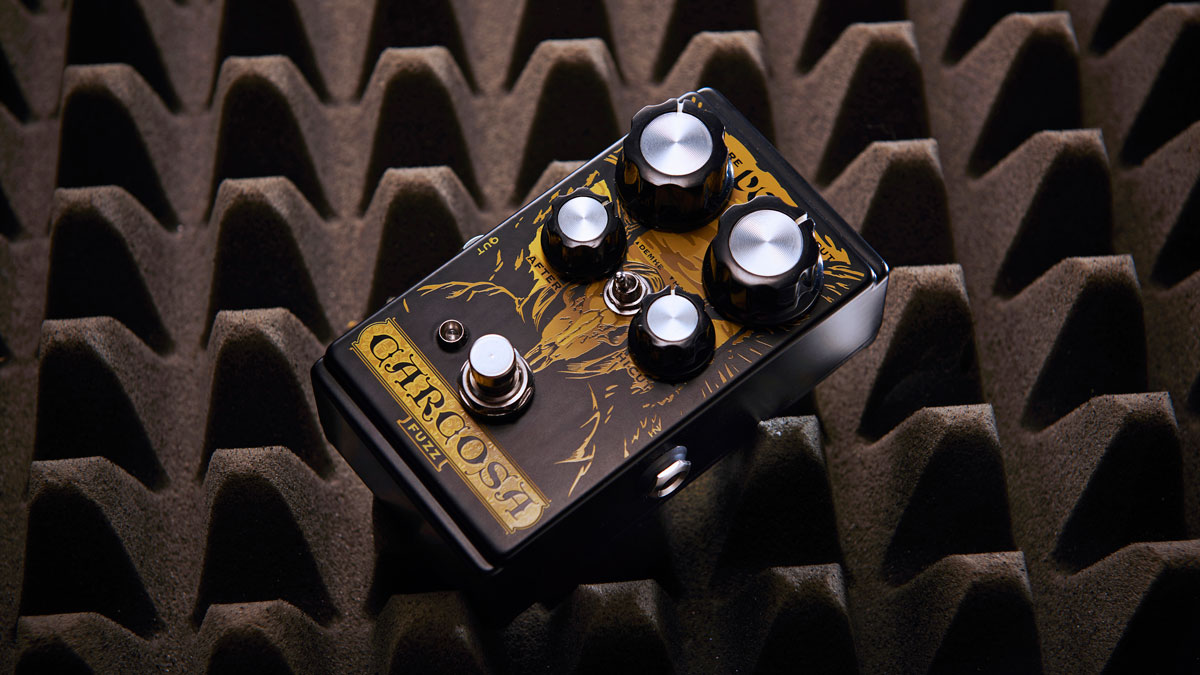MusicRadar Verdict
This is a versatile fuzz with sounds ranging from smooth to very nasty at a very competitive price.
Pros
- +
Versatile range of sounds.
- +
Good control over the top-end.
- +
Boutique quality without the price tag.
Cons
- -
None really, although those who like a simple two-knob setup may be perplexed by the knobs when dialling in a sound.
MusicRadar's got your back
The Carcosa is DOD’s take on silicon transistor-based fuzz pedals from the 70s and has its origins in the circuitry of the Maestro FZ-1S, although its control options go much further than your standard two- or three-knob vintage fuzzbox.
When you first dabble with the Carcosa, you need to choose an initial sound with a two-way toggle switch. Instead of just plain old Fuzz 1 or Fuzz 2, DOD’s designer Tom Cram gets all literary on us calling the two modes Demhe and Hali, names taken from Robert W Chambers’s The King In Yellow book, as with the pedal’s name and graphics.
The curious naming of pots continues with Before and After: Before is the fuzz amount, while After is a bias control that changes the texture of the fuzz... And therein lies the key to unlocking the pedal’s potential - juxtaposition of those two knobs yields up a wide range of fuzzy stylings. There’s also a Hi-Cut knob to get the top-end in context and a standard Output level knob.
Sounds
The first thing to note is that the Carcosa has tons of output and can be used as a clean or crunchy boost before you start getting into the realms of fuzz. The pedal has a natural voicing strong in presence to cut through a band mix, with plenty more available in that area by turning the Hi-Cut knob clockwise.
Hali is the leaner-sounding of the two modes with a tightly controlled low-end, while Demhe comes across as fuller-sounding in the bass and mids. The choice gives you options to suit the type of amp you’re using or whether you’re running it dirty or clean.
Turning up the Before knob and keeping After at zero delivers an increasing amount of conventional smooth fuzz/distortion: articulate, touch-sensitive and it cleans up well with guitar volume.
That would make the Carcosa a good buy even if there were no After knob, but turning up After is where the fun starts. It gradually changes the nature of the fuzz: you hear an increased top-end, then get into a more snarky, aggressive edge and a clicky attack, getting less sensitive to dynamics, and eventually morphing into sputtery/gated dying-battery type sounds while remaining eminently playable. The trick to finding suitable tones is via juggling the knobs, but there’s a wealth of great sounds from classic rock boost to ripping power-duo riffing.
Want all the hottest music and gear news, reviews, deals, features and more, direct to your inbox? Sign up here.
Trevor Curwen has played guitar for several decades – he's also mimed it on the UK's Top of the Pops. Much of his working life, though, has been spent behind the mixing desk, during which time he has built up a solid collection of the guitars, amps and pedals needed to cover just about any studio session. He writes pedal reviews for Guitarist and has contributed to Total Guitar, MusicRadar and Future Music among others.

